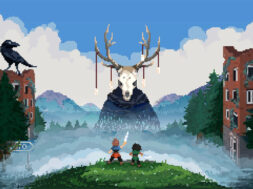Like so many others, I am filled with horror concerning recent events, particularly the injustices (which is just not strong enough a word) that resulted in the deaths of Ahmaud Arbery, Breonna Taylor, George Floyd and others which have brought about protests, both peaceful and violent, across the country. Unfortunately, these kinds of injustices and the resultant violence are far too common in American history. Wes Craven was well aware of this history when he set about to create what became the greatest villain in modern horror. Freddy Krueger was conceived as and continues to remain the great metaphor for our continued habit as Americans to sweep the past under the rug. According to Craven, Freddy grew out of his own childhood fears, ancient human terrors, and the idea from his religious upbringing of the sins of the fathers being visited upon the children.
The history of Freddy’s creation is well known: the stranger who purposefully terrorized Craven as a child, the idea of early man being most afraid of the claws of animals, the stories in the LA Times of the Hmong teenagers who died in their sleep. But another subtextual element is not often discussed. It is something that occurs over and over throughout human history, but for Craven, grew out of his coming of age in the 1960s and 70s. By the time Craven was writing A Nightmare on Elm Street, a major event in particular had occurred that changed the landscape of horror during the 80s: the election of Ronald Reagan and a return to a flag-waving patriotism that hadn’t really existed since the 1950s. Like many of his colleagues—Tobe Hooper, John Carpenter, and George A. Romero among them, Craven saw this as a betrayal of everything they had protested and fought for in the 60s. This is the generation that protested Vietnam, fought for civil rights for oppressed African Americans, and started the women’s and gay liberation movements. But in the blink of an eye, sold it all out for a comfortable life in the tract housing of the Reagan Revolution. Hooper responded with Poltergeist, Carpenter with They Live, Romero with Day of the Dead, and Wes Craven with Freddy Krueger.
Having been a college English and humanities professor, Craven was no doubt familiar with William Faulkner’s famous quotation, “The past is never dead. It’s not even past,” and that concept is infused into the DNA of A Nightmare on Elm Street. In the 1984 film, the parents are responsible for taking matters into their own hands and burning a monstrous man to death, but then ignoring the fact that they created something much worse. They left the unresolved issues they chose to ignore to rise again in a more deadly form to destroy their children.
Even what could be considered “throw-away” elements of extended conversation about Shakespeare’s Hamlet in the classroom scene underscore this point. After all, what is Hamlet but the story of a young generation discovering the dark secrets of the previous one. Even in the quotes selected, Craven makes comment of this. “In the most high and palmy state of Rome…the graves stood tenantless and the sheeted dead did squeak and gibber in the Roman streets…” is the character Horatio commenting on the dead King Hamlet’s warlike sins reflecting those of many generations earlier.
In the context of the film, the deaths of Tina (Amanda Wyss) and Rod (Jsu Garcia, credited as Nick Corri) are seen by the adults as troubled kids who had one foot in the grave anyway. Tina because she hung out with a “lunatic delinquent like Lane,” as Lt. Donald Thompson (John Saxon) asserts. Then as the priest at Rod’s funeral invokes, “those who live by the sword will die by the sword,” again asserting that Rod “had it coming.” It isn’t until the deaths and attacks affect them directly that they begin to listen.
Marge (Ronee Blakley) does not respond until she sees the wounds on Nancy’s (Heather Langenkamp) arm and the all-too-familiar hat with the name Fred Krueger written inside. Even then, her response is to insulate herself and her daughter—herself with a reemergence of her alcohol problem and both of them by installing bars on the windows of their home, which will in no way protect them from the dream-invading demon. When popular jock Glenn (Johnny Depp) is found dead, the wake-up call begins to signal that Nancy is telling the truth. Of course, by then it is too late. Nancy is a true hero in many senses, but particularly in that she is proactive. She refuses to see this horror continue and puts herself in danger multiple times in attempt to learn more about and ultimately stop the monster that only exists to destroy.
On the other hand, how tempting it is to simply ignore a problem until it affects us directly. Even when confronted with evidence that Krueger is the one killing their children off, the adults refuse to believe. In many ways it’s hard to blame them for their disbelief. Krueger was dead after all and, in the real world, the dead don’t return, right? And A Nightmare on Elm Street is “only a movie…only a movie…only a movie…” as the famous tagline for another Wes Craven film goes.
Well, perhaps our history proves otherwise. The violence of the 60s is happening all over again and seems to do so every twenty-five years or so. 1968—the assassination of Martin Luther King, Jr. leads to nationwide rioting. 1992—major riots in Los Angeles after police officers who beat Rodney King nearly to death were found not guilty. 2020—nationwide protests and riots in response to the death of George Floyd under the knee of a white police officer. But all these explosions of violence came from buildup over time; incident after incident that left us as a nation sitting on a powder keg ready to erupt at any moment. Excuse after excuse, partisan bickering, a lack of any kind of meaningful action just lead to more and more buildup as the bodies of the innocent continue to pile up.
And ultimately that is what Freddy is all about; he revels in the death of innocents. He’s a dark reflection of Steinbeck’s Tom Joad, who is there to defend against injustice. Freddy’s gleeful laugh can be heard throughout the ages and even just in the 35 years since A Nightmare on Elm Street was released. We see Freddy in the willful ignorance of the AIDS epidemic in the 80s and then again when it was ignored in Africa in the late 90s and 2000s. In the record of police brutality that led to the 1992 Los Angeles riots. In the torture and murder of Brandon Teena and Matthew Shepard. He’s there when children were gunned down at Columbine, Sandy Hook and Parkland. And when Trayvon Martin, Eric Garner, Ahmaud Arbery, George Floyd and countless other Black men and women are taken from this world by racism long ignored and allowed to continue, that evil specter of buried sins looms large.
We in the white community have spent too long being the disbelievers, myself very much included. I was Nancy’s dad when I heard about Trayvon Martin and Eric Garner all those years ago and then again when Michael Brown was killed in Ferguson. I am guilty of being Glenn’s parents, taking the phone off the hook as Nancy pleads that he will die. Too often, I have been silent out of fear of saying the wrong thing and disbelieving of an all too real situation. The Black community is under siege and this is our wake-up call.
It’s time for America to finally wake up from this recurring nightmare and stop putting off our sins for the next generation to take care of. If we don’t awake and take real, substantive action, the monster will only continue to grow stronger and destroy all that we love and hold dear. Maybe that’s what Wes Craven was really trying to tell us all along.
Editor’s Note: The author has requested that payment for this article will be included in BD’s ongoing donations to the Black Lives Matter movement. Here’s how you can help.









